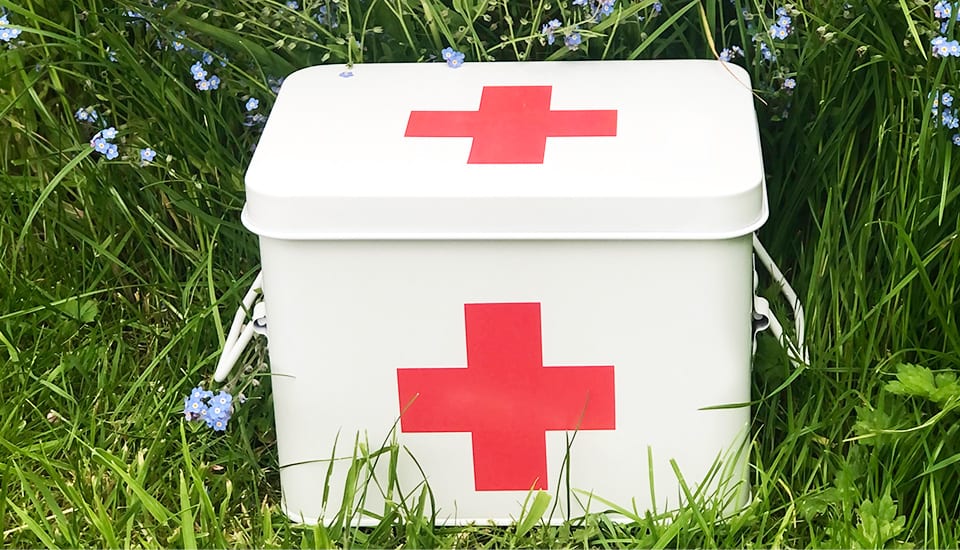
Having the great outdoors on your doorstep is one of the advantages of rural living. However, as the old saying goes ‘accidents do happen’, and bumps, scrapes and stings are all part of the experience.
Having a well-stocked first aid kit close to hand is really useful to deal with minor accidents and injuries. We also keep a first aid kit in our car for when we are out and about. Your first aid kit should always be locked and kept in a cool, dry place out of the reach of children.
If an incident does occur, then it’s important not to panic – if you can remain unruffled and act in a confident manner then this will help calm your child. Remember not all parents are happy for their offspring to be given medication, so it’s always best to ask for guidance up front if you are going to be looking after someone else’s children.
We have found that schools are now using ‘wet tissue’ to treat an array of ailments. It’s certainly what my youngest child now expects if they get a cut or graze and there is an almost immediate calming effect.
There are many complete first aid kits that can be purchased and they are often very good value for money. Based on our own experiences and recommendations from the NHS, we’ve pulled together a list of our First aid essentials:
- Plasters
- Steristrips
- Small pair scissors
- Tweezers
- Antihistamine cream
- Antihistamine syrup
- Paracetamol for children and adults
- Ibuprofen for children and adults
- Micropore tape.
- Antiseptic spray/wipes
- Sterile dressing
- Thermometer – doesn’t need to be digital
- Antiseptic cream
- Distilled water
- Eye bath
- Sterile gloves
- Bandages
- Sterile gauze in a range of sizes
- Small sewing kit with a needle.
Knocks to the head or other parts of the body are a common injury and a cold compress can help to lower the temperature while reducing pain and swelling. They are easy to make at home (frozen peas are often a favourite as they mould to the body) however remember that ice should never be applied directly to the skin, it also shouldn’t be used for a major injury or for long periods of time.
If in doubt, then always seek professional help.


